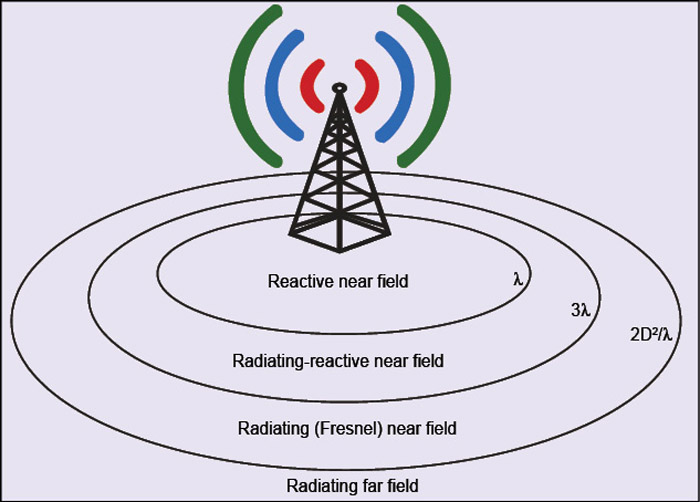Electromagnetic radiation and standards
Electromagnetic radiation is a form of energy, exhibiting wave-like behaviour as it travels through space. It has both electric and magnetic field components, which oscillate in phase perpendicular to each other and perpendicular to the direction of energy propagation. Fig. 1 shows the different forms of electromagnetic energy in the entire spectrum of electromagnetic radiation, with the range of frequencies, sources, their energies and effects.


When referring to biological radiation exposures, electromagnetic radiation is divided into two types: ionising and non-ionising. Because the human body is composed of about 60 per cent water, ionising and non-ionising radiations refer to whether the RF energy is high enough to break chemical bonds of water (ionising) or not (non-ionising).
Technically, all radiation and fields of the electromagnetic spectrum that do not normally have sufficient energy to produce ionisation in matter, characterised by energy per photon less than about 12 electron volts (eV), wavelengths greater than 100 nanometres (nm) and frequencies lower than 3×1015Hz, is termed as non-ionising radiation. Clearly, radiation that has enough energy to move atoms in a molecule around or cause them to vibrate or pump an electron to a higher energy state, but not enough to remove electrons, is termed as non-ionising radiation.
Extremely-low frequency (ELF) radio waves, microwaves, infra-red, visible light and near ultraviolet are all examples of non-ionising radiation. Here, it is noteworthy that static fields do not radiate and the light from the Sun is also largely composed of non-ionising radiation, with notable exception of some ultraviolet rays.
On the other hand, ionising radiation has enough energy to remove tightly-bound electrons from atoms and thus creating ions. High-frequency ultraviolet rays, X-rays, gamma rays and cosmic rays are examples of ionising radiation and have enough high energy to strip-off electrons or even break-up the nucleus of atoms and thereby releasing huge amount of energy, which may disrupt the chemical bond and ultimately result in ionisation in the human body.
Exposure to very high levels of RF radiation can be harmful due to the ability of RF energy to rapidly heat biological tissues. Adverse effects (tissue damage) in humans could occur during exposure to high-RF levels because of the body’s inability to cope with or dissipate excessive heat that could be generated. The eyes, kneecaps and testes are particularly vulnerable to RF heating because of the relative lack of blood flow in these organs to dissipate excessive heat.

After examining the problems arising from non-ionising radiations, ICNIRP has developed international guidelines on exposure limits. These reference limits are tabulated in Table I for the frequencies of interest. Here, ‘occupational’ refers to operational and maintenance staff.
Thus, the reference levels for general public and occupational exposure to time-varying electric, magnetic and electromagnetic fields can be easily found for GSM, UMTS, CDMA and WiMAX from Table I. It is noteworthy that these communication systems are strongly time-dependent, so it is required to take average of the measured quantity over a defined period and measurements should be made during time of peak-usage. For example, ICNIRP reference (i.e., field) limits are to be averaged over any six-minute period below 10GHz and over a 68/(1000f)1.05-minute period for frequencies exceeding 10GHz (where f is the frequency in MHz).
In any particular exposure situation, measured or calculated values of any of these quantities can be compared with the appropriate reference level. Compliance with the reference level will ensure compliance with relevant quantities like current density (electric/magnetic field intensity), specific absorption rate (SAR) and power density. If the measured or calculated value exceeds the reference level, it is necessary to test compliance with the relevant field quantity and to determine whether additional protective measures are necessary.
Based on the reference levels set by ICNIRP, compliance distances from base-station antenna have been calculated with the help of equivalent isotropically-radiated power in the direction of maximum antenna gain (eirp, in watts) (Table II). The eirp is the product of the power supplied to the antenna and the maximum antenna gain relative to an isotropic antenna. It should always be assured that for distances greater than the compliance distance, the radiation level is under the limit. Thus, three types of exposure zones have been identified:






